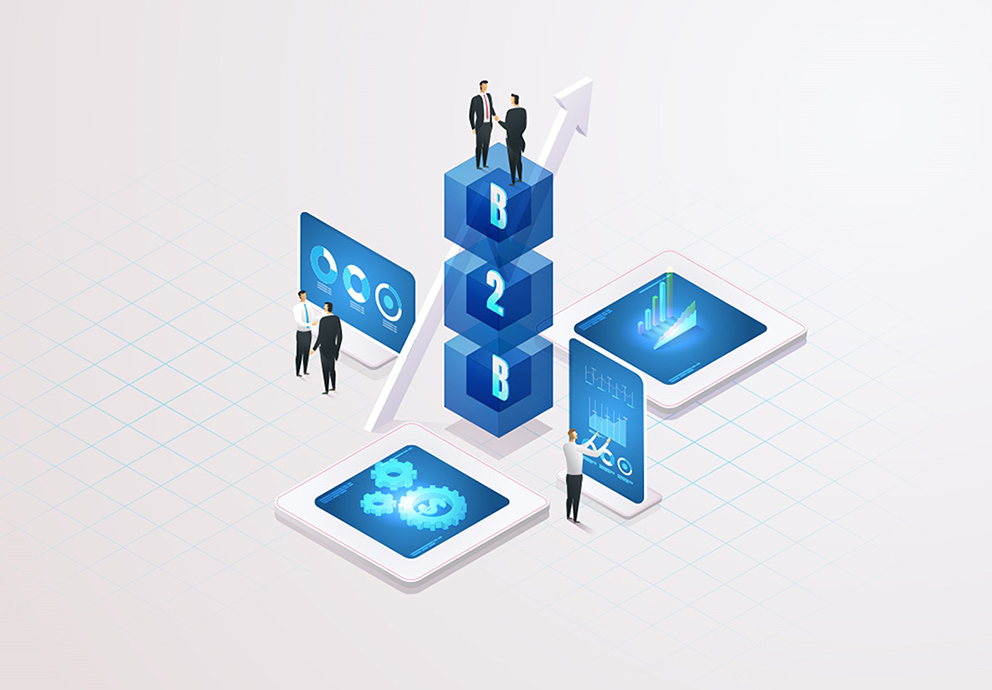Despite the complexity of internal procedures (special role of the corporate buyer, quotation and invoicing, treasury management, etc.), trade between companies is adopting innovative payment methods, such as instant transfer or payment by link.
How do retailers who cater to a professional clientele (construction, office supplies, DIY, wholesalers, marketplace, etc.) manage the invoicing and payment of their goods or services ? How are they integrating technological innovations in payment ? Although it represents more than 130 trillion dollar in sales volumes, the BtoB market remains dominated by manual or paper solutions (+50 % of transactions)(1). In addition, as Antoine Compin, Managing Director of Manutan France, the leading European distributor of equipment to companies, communities and craftspeople, reminds us, the exchange and payment processes are distinguished by considerable complexity. « B2B customers often (have) significant requirements, due to the value and complexity of the product. And the person who is buying is not necessarily the end user, » explains the latter, in an interview with Yann Gourvennec (Visionary Marketing).
Compared to BtoC, which is aimed at the end consumer, the baskets often have nothing to do with them except when they are, for example, small craftspeople or installers. It is estimated that the average B2B spend is more than 27 times higher than that of B2C ( €1,853.43 according to Forrester vs €65.50 – source : FEVAD). In addition, stores, e-commerce sites and marketplaces that cater to a professional clientele such as Office Depot, Bureau Vallée, Brico Dépôt, Metro, Ankorstores, etc.), must face specific constraints in terms of payment : credit card ceilings for large expenditure, average payment times of their debtors (at Office Depot, for example, large accounts pay by bank transfer within the limit of 30 days), the headache of the reconciliation between invoicing and collection, and requests for quotes (sites must enter this need in their sales tunnel).
While retailers who cater to private customers have been able to adopt new digital technologies (contactless, peer-to-peer, Buy Now, Pay Later), B2B payments have not yet switched to digital as a whole. But the process is accelerating. The simplification of the sales channel, the fluidity of transactions, and the quality of customer relations have become important with the global relegation imposed by Covid. 80 % of BtoB sales are expected to be made on digital channels by 2025, according to a 2021 Gartner study.
Currently, in Europe, 1 % of the volumes exchanged BtoB are still paid by means of paper cheques. They rest mainly constitute manual transfers, reconciled by hand (for 97 % of volumes). Card represents only 1 to 5 % of the volumes worldwide. Two payment methods therefore dominate : account-to-account transfer and bank card. But the latter, secured by strong authentication (3D Secure) and particularly favoured for online purchases, suffers from a disadvantage. Companies often have to pay expenses that exceed the limits set for the use of cards (between 2,500 euros and 15,000 euros, depending on the banks, and the types of cards).
With skyrocketing inflation that has introduced new tensions in relation to cash, BtoB companies are seeking to remove these barriers. Among these is Apicius-Shop, the first online sales site for professionals in the Cafés, Hôtels and Restaurants (CHR) sector. Created in 2017, it offers more than 20,000 products to catering professionals. The e-merchant sought to overcome two constraints : the notorious ceilings and the time taken by its customers to add the bank details of a trusted beneficiary during conventional bank transfers (free, but requiring 1 to 3 working days to be executed).
« B2B customers are very volatile. They will absolutely not seek to finalise their purchases if the amount of payment solutions is limited, if the payment process is too long, or if a technical problem occurs, » stresses Richard Fonzes, President of Apicius-Shop, presenting the solutions integrated on their site (immediate transfer, payment by link and refund automation). Result : The average spend now stands at 1,300 euros compared to 500 euros on average previously. Certainly, unlike conventional transfers, instant transfer (or IP) pays off. This solution increases the conversion rate, reduces average payment terms by at least three days and reduces transaction costs (depending on volumes) compared to those associated with credit cards.
Reducing the time and complexity of payment and invoicing processes between professionals... the digitisation of BtoB flows is undoubtedly underway. Within companies, the buyers themselves, who often now belong to Generation Y, are familiar with e-commerce practices. Competition from marketplaces and Amazon is also being felt. BtoB sales professionals must adapt quickly, and they must choose simple, efficient and inexpensive digital payment solutions in a low-margin sector.



